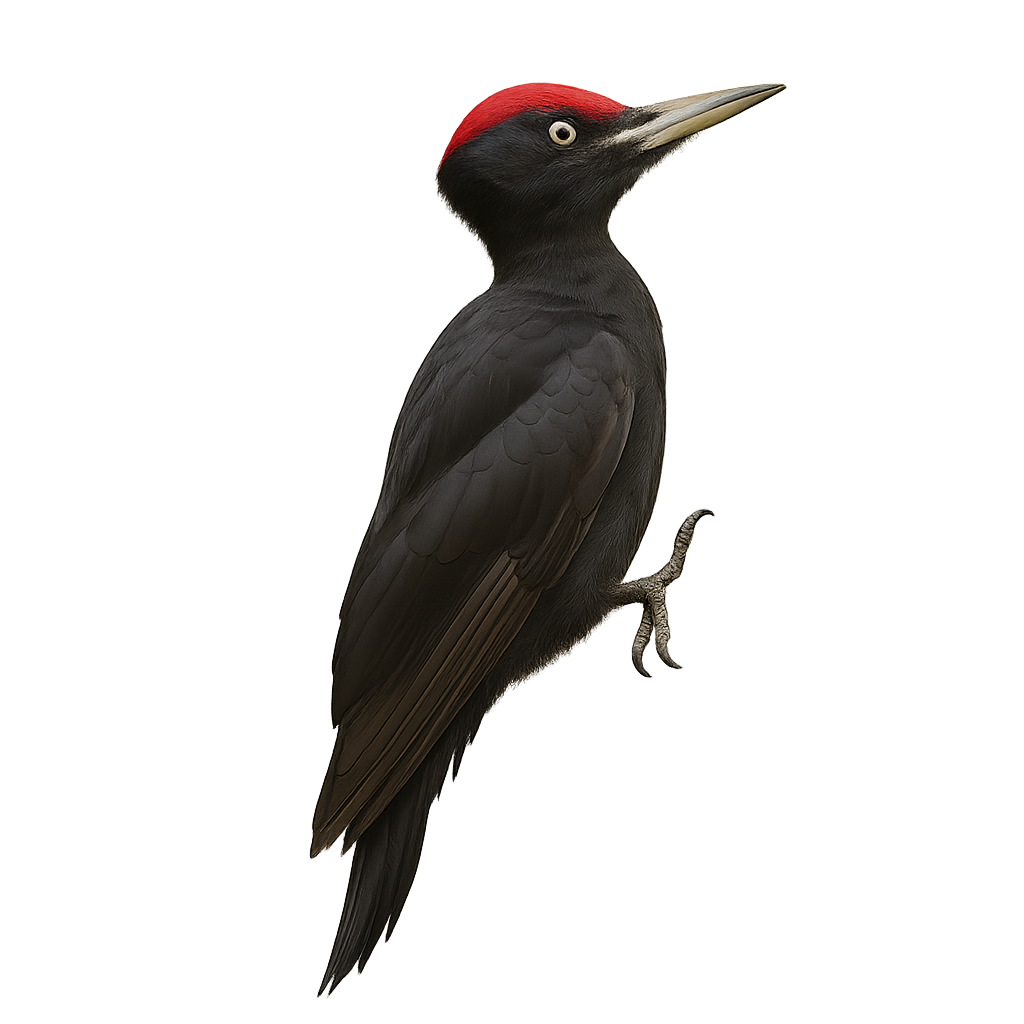Observe and photograph a species in its natural habitat
Learn where and when to observe a species in the wild, how to recognize it in the field, and what habitats it lives in. Get photography tips adapted to its behavior and capture stunning images without disturbing the animal. For full details, open the complete profile in the WildlifePhotographer app.
Black woodpecker
Scientific name: Dryocopus martius

IUCN Status: Least Concern
Family: PICIDAE
Group: Birds
Shyness: Suspicious
Safe distance: 20 m
Breeding season / Courtship: 01.01-28.02
Gestation: 14 à 16 jours
Births: 15.03-16.04
Habitat:
Forests and woodlands
Description:
The Black Woodpecker is a large bird from the woodpecker family, primarily found in deciduous and mixed forests of Europe, Asia, and North Africa. It measures between 45 and 50 cm in length, with a wingspan of 60 to 70 cm, and weighs between 250 and 300 g. Its plumage is entirely black, except for its ivory-colored bill. In females, a red patch adorns the top of the head, while in males, the red patch extends from the top of the head down to the nape. The Black Woodpecker is an excellent climber and a skilled driller, primarily feeding on insect larvae, arthropods, and sometimes small mammals found under tree bark. It prefers mature, well-established forests, where it creates large holes in search of food. While its population remains relatively stable, the Black Woodpecker is sometimes threatened by deforestation and habitat loss.
Recommended lens:
>=400 mm
Photography tips:
Approach slowly and discreetly: The Black Woodpecker is a rather solitary and often shy bird, so it is essential not to frighten it by approaching too abruptly.
Favor soft light: Photograph early in the morning or late in the day to capture softer light and the details of its shiny black plumage.
Capture the drilling moment: The Black Woodpecker uses its powerful claws and beak to drill into tree trunks. It’s a fascinating behavior that provides dynamic and interesting images.
Be patient: This woodpecker can spend a lot of time foraging for food, so wait quietly for it to position itself for a natural shot of its activity.
The Black Woodpecker is a protected species in many areas, and its forest habitat is declining. Respect its territory and do not disturb its nesting or foraging sites. Be discreet and follow local conservation rules to preserve this fragile species.
Ready to take action?
Choose your platform and start your free trial today



